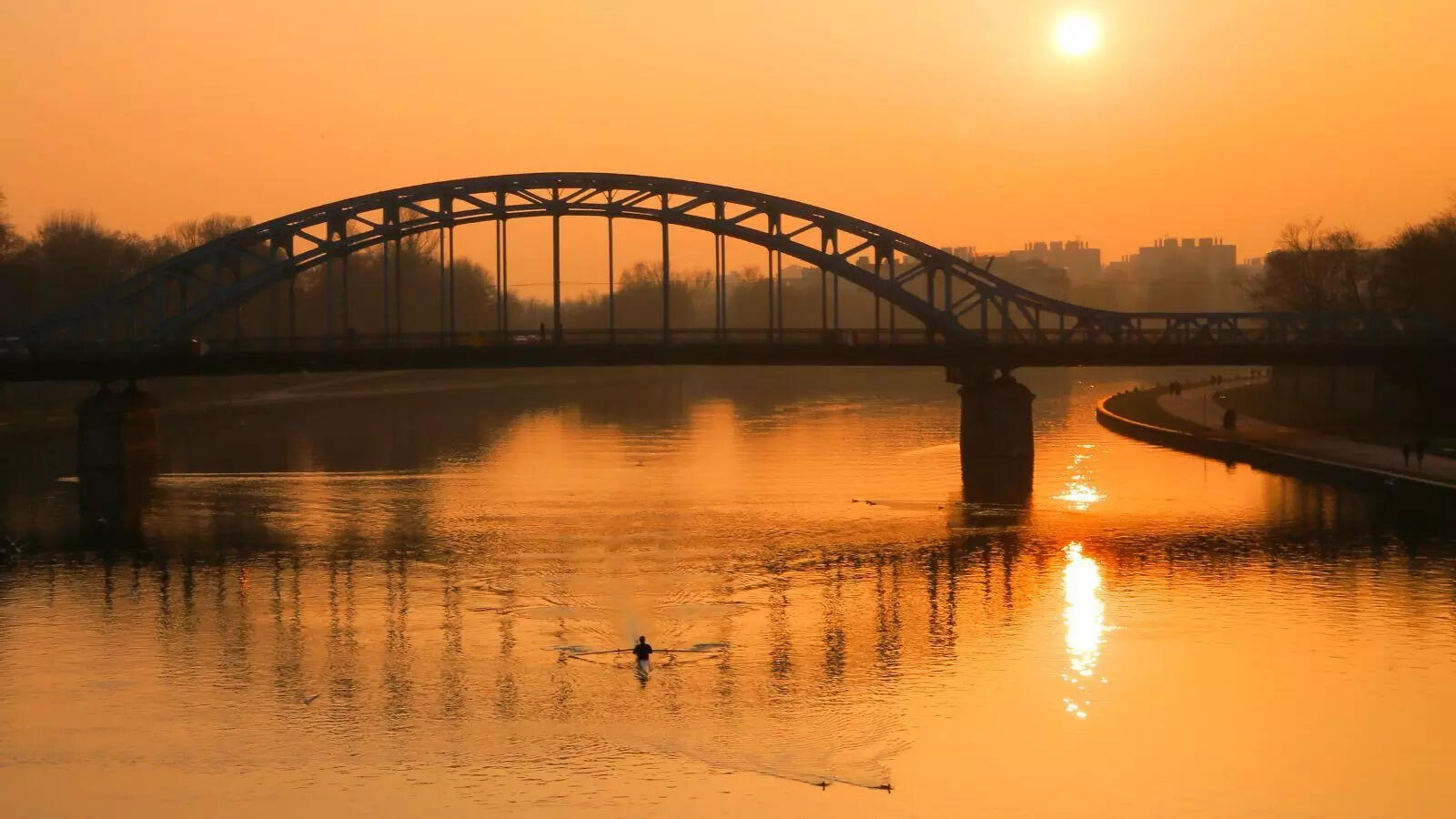Which River Flows From Nashik To Bay Of Bengal? Find Out Here
The Godavari River , famously called the Dakshin Ganga or “Ganga of the South,” is one of India’s most sacred and vital rivers. Flowing from the Western Ghats to the Bay of Bengal, it supports millions of people, fertile lands, and rich biodiversity. Beyond its spiritual significance, the river is a lifeline for agriculture, culture, and history across several southern states.
Key Points About the Godavari River:
1. Dakshin Ganga of India
The Godavari is revered as the Dakshin Ganga due to its spiritual and cultural importance, mirroring the sanctity of the Ganga in northern India.
2. Origin and Course
It originates at Trimbakeshwar in the Western Ghats near Nashik, Maharashtra, and flows eastward through Telangana and Andhra Pradesh before emptying into the Bay of Bengal.
3. Length and Ranking
At 1,465 km, it is the longest river in Peninsular India and the second-longest river in the country, after the Ganga.
4. Triple River System
Below Rajahmundry, it splits into two major branches Gautami and Vashishta, forming one of India’s largest river deltas.
5. Kumbh Mela Location
Nashik, located on the banks of Godavari, is one of the four major pilgrimage sites for the Kumbh Mela, attracting millions of devotees.
6. Fertile Rice Bowl
The Godavari Delta , also called the “Rice Bowl of India,” has extremely fertile soil, making it a key agricultural region for rice cultivation.
7. Ancient and Mythical References
The river is also called Gautami, as per legend linked to sage Gautama Rishi, and finds mentions in epics like the Ramayana.
8. Dams and Water Management
Over a dozen major dams and barrages have been built along the river for irrigation, hydroelectric power, and flood control.
9. Biodiversity Hotspot
The river supports rich flora and fauna, including the Coringa Wildlife Sanctuary, home to mangroves, aquatic species, and migratory birds.
10. Delta and Discharge
Godavari splits into multiple distributaries at its delta near the Bay of Bengal, known as Sapta Godavari, carrying a high sediment load and experiencing seasonal monsoon-driven flow.
11. Tributaries and Inter-State Importance
Its largest tributary, the Pranhita, forms from Wardha, Wainganga, and Penganga rivers. Water sharing is regulated by the Godavari Water Disputes Tribunal.
12. Seasonal Monsoon Dependency
About 84% of its annual flow depends on the Southwest Monsoon, making rainfall critical for agriculture and water supply.
13. Tectonic and Geological Features
Originating in the Western Ghats, the river flows over hard crystalline rocks and Deccan Traps, influencing groundwater and runoff patterns.

Key Points About the Godavari River:
1. Dakshin Ganga of India
The Godavari is revered as the Dakshin Ganga due to its spiritual and cultural importance, mirroring the sanctity of the Ganga in northern India.
2. Origin and Course
It originates at Trimbakeshwar in the Western Ghats near Nashik, Maharashtra, and flows eastward through Telangana and Andhra Pradesh before emptying into the Bay of Bengal.
3. Length and Ranking
At 1,465 km, it is the longest river in Peninsular India and the second-longest river in the country, after the Ganga.
4. Triple River System
Below Rajahmundry, it splits into two major branches Gautami and Vashishta, forming one of India’s largest river deltas.
5. Kumbh Mela Location
Nashik, located on the banks of Godavari, is one of the four major pilgrimage sites for the Kumbh Mela, attracting millions of devotees.
6. Fertile Rice Bowl
The Godavari Delta , also called the “Rice Bowl of India,” has extremely fertile soil, making it a key agricultural region for rice cultivation.
7. Ancient and Mythical References
The river is also called Gautami, as per legend linked to sage Gautama Rishi, and finds mentions in epics like the Ramayana.
8. Dams and Water Management
Over a dozen major dams and barrages have been built along the river for irrigation, hydroelectric power, and flood control.
9. Biodiversity Hotspot
The river supports rich flora and fauna, including the Coringa Wildlife Sanctuary, home to mangroves, aquatic species, and migratory birds.
10. Delta and Discharge
Godavari splits into multiple distributaries at its delta near the Bay of Bengal, known as Sapta Godavari, carrying a high sediment load and experiencing seasonal monsoon-driven flow.
11. Tributaries and Inter-State Importance
Its largest tributary, the Pranhita, forms from Wardha, Wainganga, and Penganga rivers. Water sharing is regulated by the Godavari Water Disputes Tribunal.
12. Seasonal Monsoon Dependency
About 84% of its annual flow depends on the Southwest Monsoon, making rainfall critical for agriculture and water supply.
13. Tectonic and Geological Features
Originating in the Western Ghats, the river flows over hard crystalline rocks and Deccan Traps, influencing groundwater and runoff patterns.
Next Story